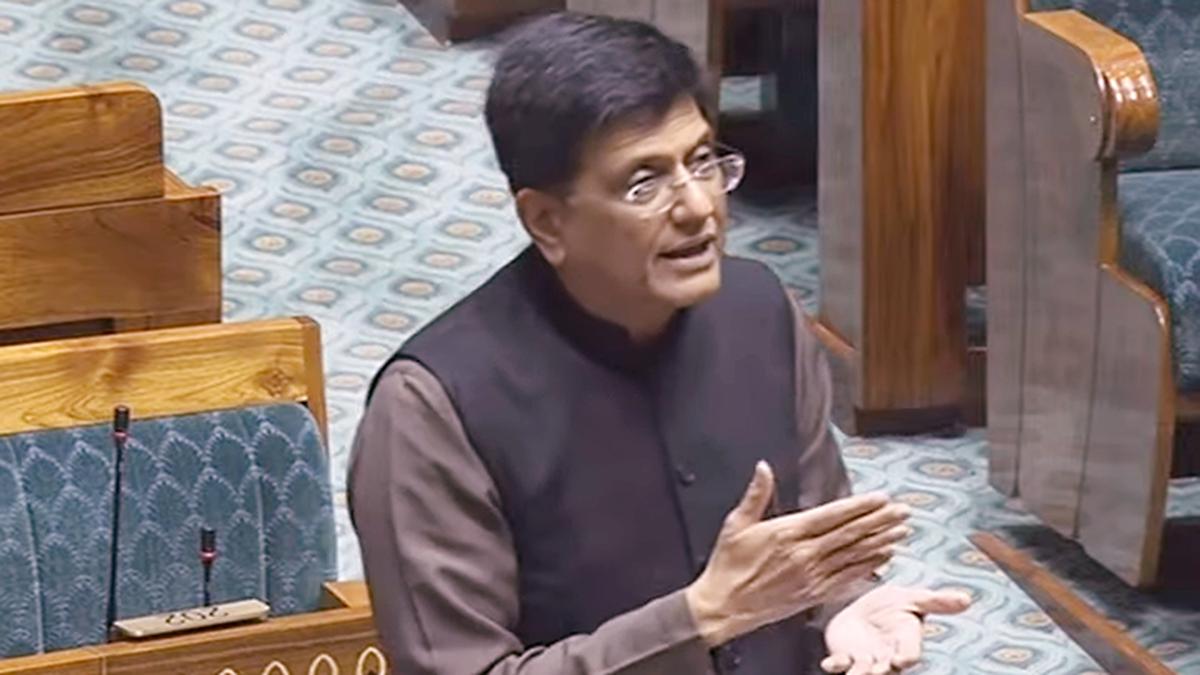Electricity generation rose 8.6% in march 2024 from a 1.6% contraction in March 2023. File
| Photo Credit: The Hindu
India’s industrial output growth slowed to 4.9% in March from 5.6% in February, as per the National Statistical Office, with base effects from last March when output had tanked 1.9%, boosting the uptick. Mining output slid to a 19-month low growth of 1.2%, while electricity generation rose 8.6% from a 1.6% contraction in March 2023.
Manufacturing, which constitutes 77.6% of the Index of Industrial Production (IIP), grew at a five-month high pace of 5.2% in March, relative to a mild 1.5% uptick in the same month last year. Manufacturing growth for February was revised downwards to 4.9% from 5% estimated earlier, along with the month’s IIP growth which was downgraded from 5.7%.
Overall industrial output grew 5.8% in 2023-24, a tad higher than the 5.2% rise in the previous year, with manufacturing output growing 5.5% compared with 4.7% in 2022-23 and mining output accelerating by 7.5% last year from a 5.8% rise in the preceding year. Electricity generation grew 7.1% in 2023-24, easing from an 8.9% surge in the previous year.
Seven of 23 major manufacturing segments recorded a contraction in March, but as many as ten segments reported a drop in output through 2023-24, including wearing apparel (-14.2%), computers and electronics (-11.4%), furniture (-6.9%), wood products (-5.9%), chemicals (-1.7%) and leather (-1.1%).
Consumer goods remained the weakest performers through last year, despite beneficial base effects. Consumer durables grew the weakest at 3.6% compared with a meagre 0.6% rise in 2022-23, while non-durables rose 4% vis-à-vis a 0.7% uptick in the previous year.
In March, consumer durables output recorded the sharpest surge for the second month in a row, rising 9.5%, albeit over an 8% contraction in March 2023. In February, they had grown 12.3% relative to a 4.1% contraction a year ago. Consumer non-durables broke a two-month streak of contraction to rise 4.9%, but again over a weak base from March 2023, when they shrank 1.9%.
“The consumption scenario remained mixed last year with urban demand showing resilience while rural demand continued to lag,” said Rajani Sinha, CareEdge Ratings’ chief economist. While hopes of a good monsoon, moderating inflation, and pick-up in rural demand are positives, a broad-based and durable improvement in consumption remains the key monitorable this year, she stressed.
Infrastructure and construction goods continued to record healthy growth at 6.9% in March, while capital goods growth picked up to 6.1% from just 1.2% in February. Intermediate goods and primary goods rose 5.1% and 2.5%, respectively.
Over the full year gone by, Infrastructure and Construction goods recorded the strongest growth of 9.6% over an 8.4% rise in 2022-23, followed by capital goods which grew 6.2% compared with a 13.1% rise in the previous year. Primary and intermediate goods grew 6% and 5.2%, respectively.
Although a majority of high-frequency indicators have seen an uptick in April over March trends, ICRA chief economist Aditi Nayar said she expects industrial output growth to slow to around 3% to 4% in April owing to base effects as the same month had seen a 4.6% uptick in 2023.
In absolute terms, the industrial output index was up 8.22% from February with a sequential rise in output recorded in Manufacturing, Mining and Electricity, as well as the six end-use-based classifications of factory output.


